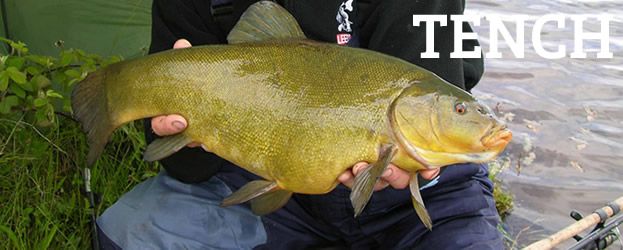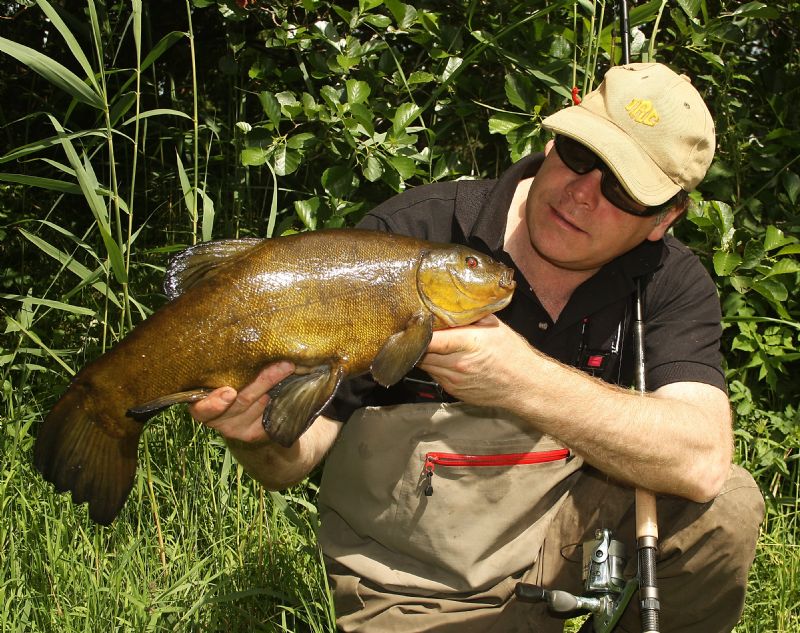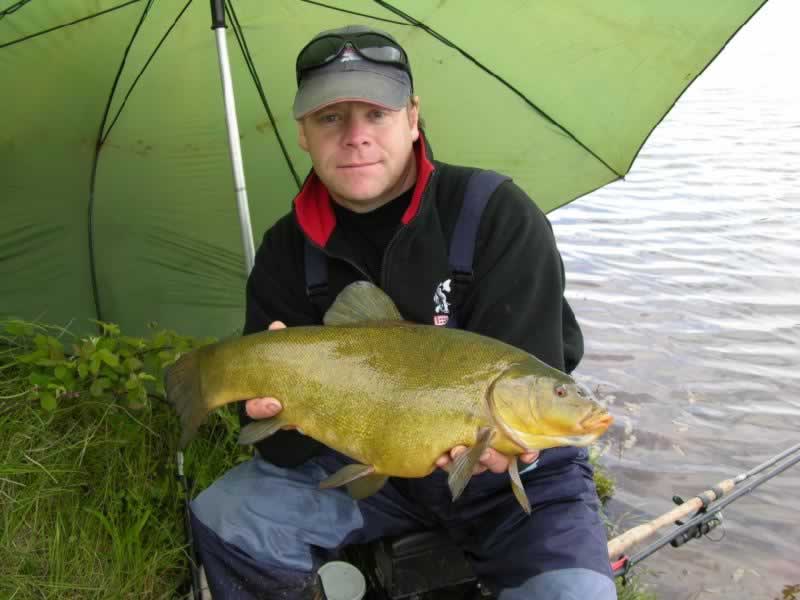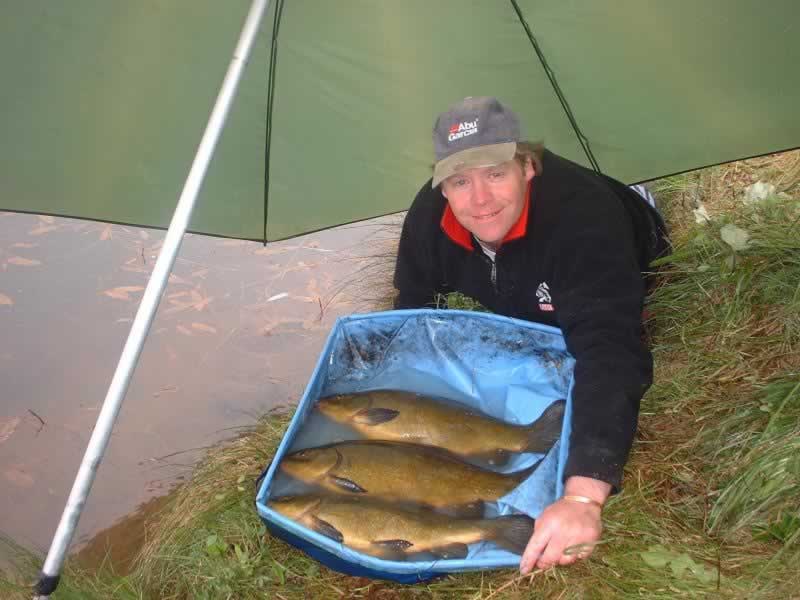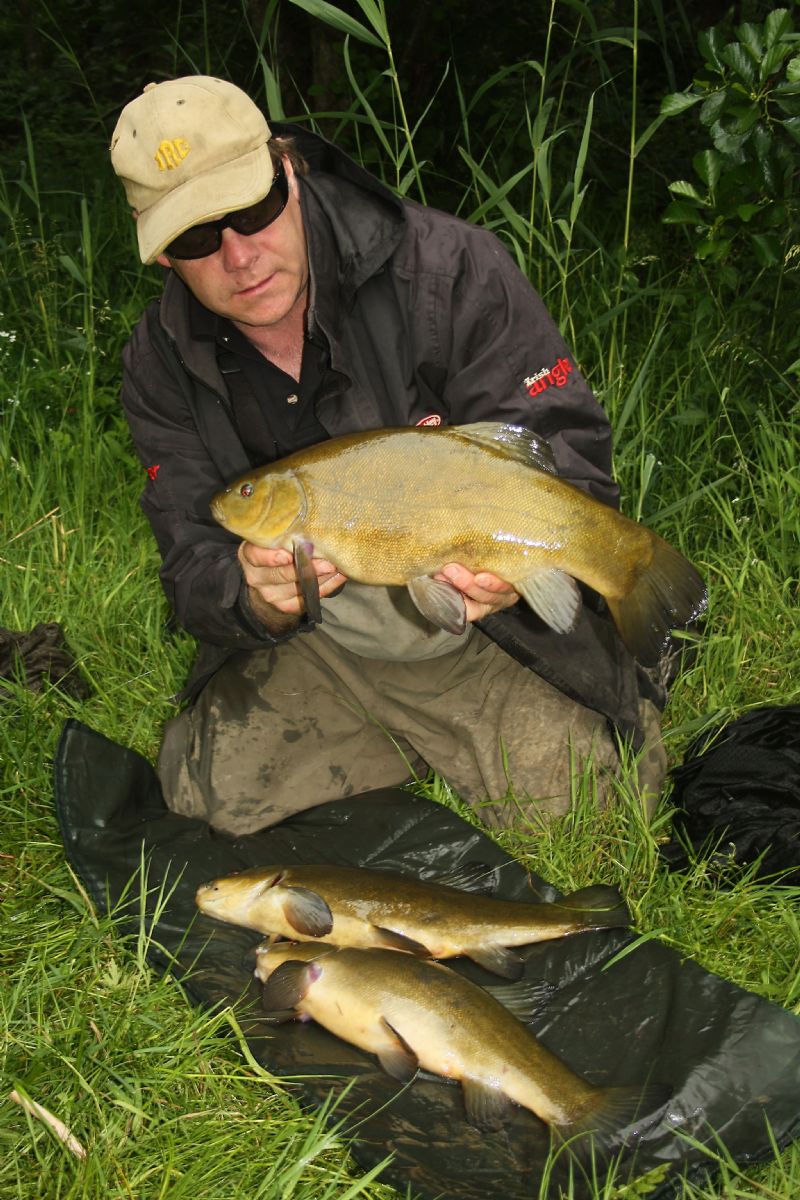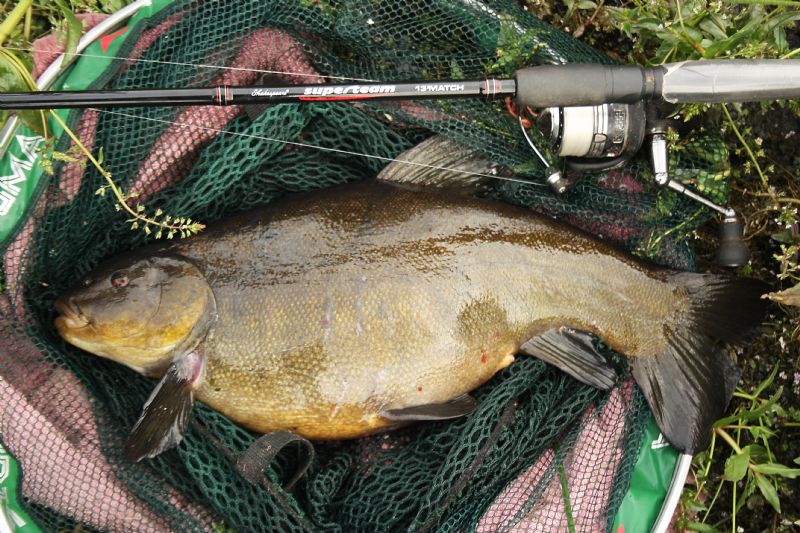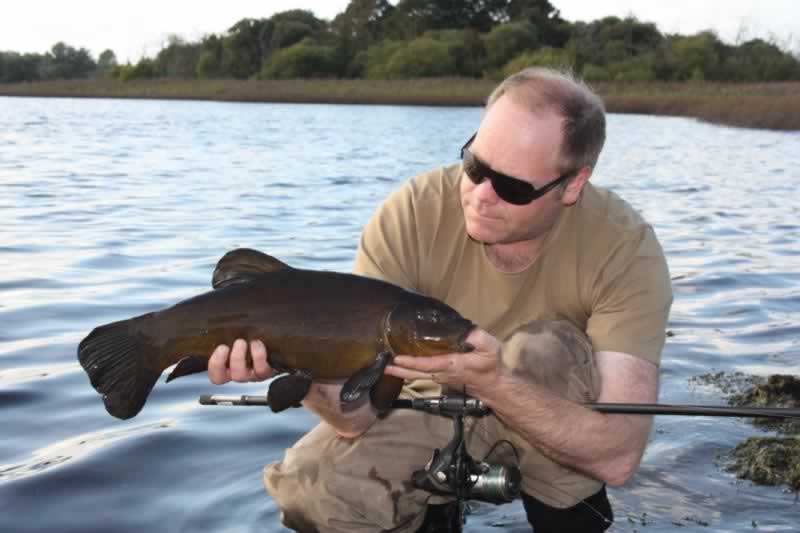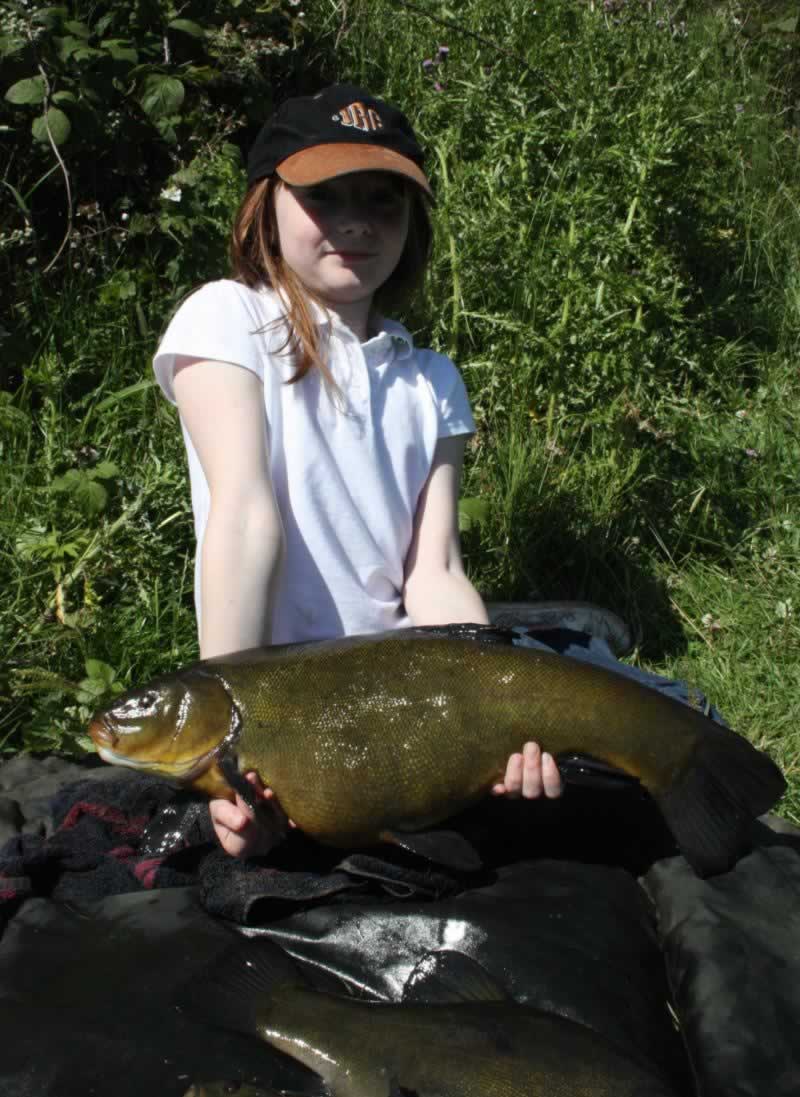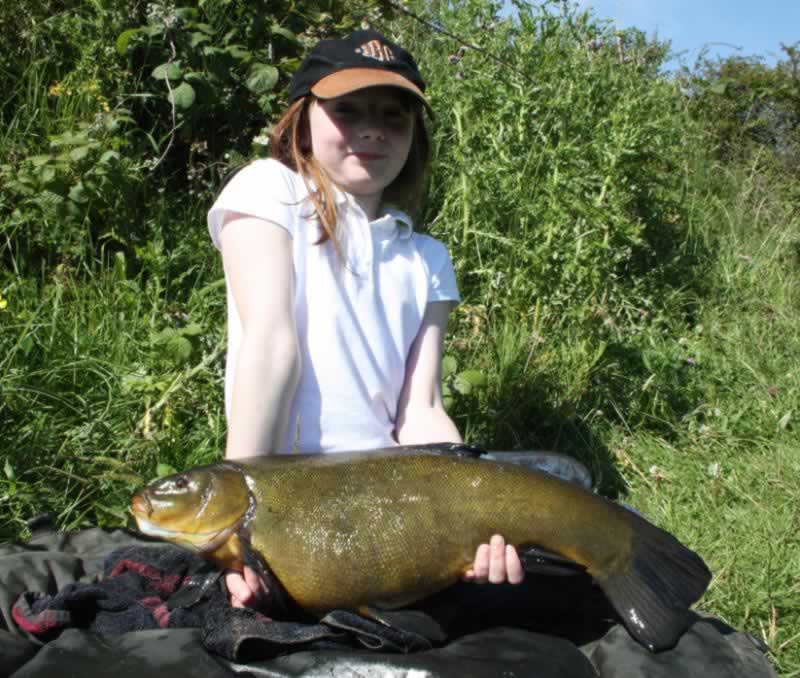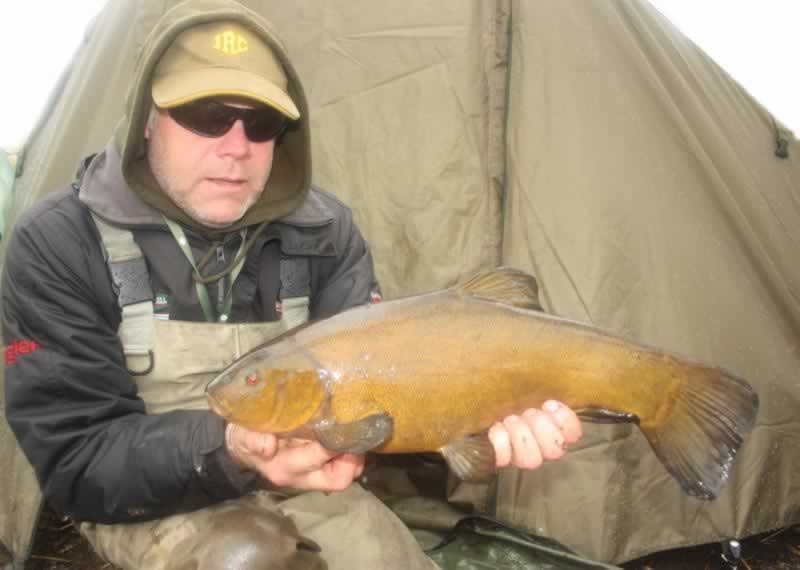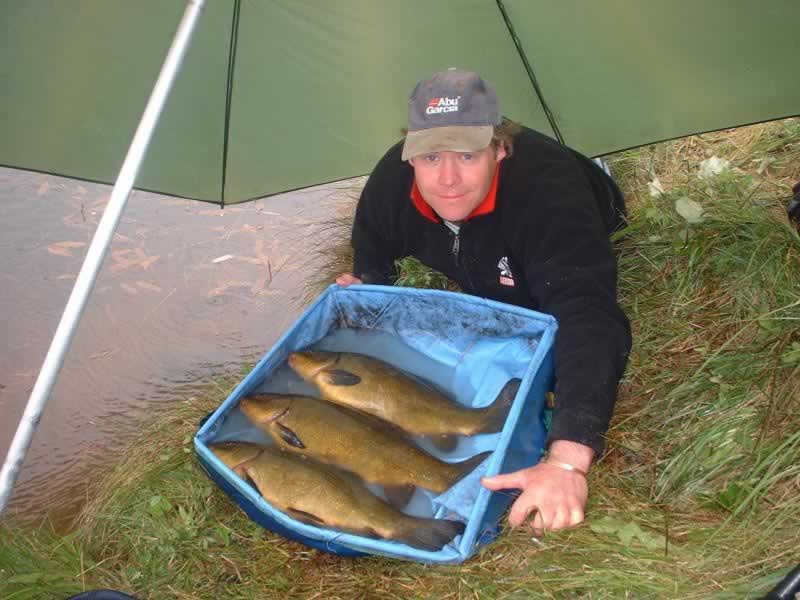Tench
Tench (Tinca tinca)
Record 8lb 15oz taken on 20.06.1995 by Nick Parry at Ballyeighter Lake.
Specimen 6lb, or 2.722 kilo, or 52 cm fork length
Identification
Tench have a rotund body shape, with large pelvic fins, a small dorsal fin and thick, muscular tail. The under-belly is light in colour and can be a variety of colours from deep yellow and orange to pale cream. The flanks are deep olive green, or sometimes green-bronze. The eyes are small and bright orange-red in colour. The scales are extremely small and the skin is smooth to touch. The pelvic fins in adult males are thick and spoon-shaped. There are two small barbules either side of the mouth.
Where to catch
Tench were once limited to warmer areas south of the border but are now widespread throughout Ireland. From only a handful of known lakes as recent as forty years ago, they are now found in practically all counties of Ireland, from County Clare to County Down. Old favourites such as the hot water stretch at Lanesborough produce fair catches, as do many border waters. Rahans still has the possibility of producing specimen fish, likewise Monalty. In my experience, County Longford and its myriad of loughs and lakes in and around Strokestown, and quiet bays linked to the Shannon have arguably the largest populations of Tench per acre, and well worth investigating through spring and early summer.
When to catch
A great deal depends upon water temperature, and with the slightly warmer climate south of the border, a possibility of Tench is always, on average, earlier in these areas. With a warm start to the year, April-May would herald the appearance of feeding fish, with May-June offering the first chance in the north. A mild winter may see a few fish moving out of semi-hibernation but this can be very limited. A steady 13-14 degrees during the day will bring Tench onto the feed, with early morning sessions favourite.
Bait
Similar to most coarse fish, Tench will browse on a wide range of aquatic food, from vegetation to crustaceans, larvae, snails and water beetles. The usual baits such as maggots, caster, worms including brandlings and lobworms, sweetcorn, bread flake and sections of various molluscs all have their place. Boilies and pellets developed mostly from Carp angling will pick up larger fish if the venue is being well fed with these particles baits.
Methods
On many occasions, particularly when an angler wishes to try a new, previously un-fished swim, it is sometimes necessary to “rake” an area before fishing. I stress, this isn’t always needed, but there are occasions when it is worth moving away from normal well-tried areas and clearing a new swim. This involves using a pre-made double headed garden rake attached to a chain and a length of rope. Throwing and retrieving the rope will clear a path allowing room to pre-bait and fish, and more importantly, safely land a sizeable fish.
If you are prepared to spend some time on a chosen mark, pre-baiting is usually the key to a successful outcome. Tench enjoy beds of boiled hemp seed, chopped worm and particle baits such as chopped corn, pellets etc. The extent and nature of the pre-baiting will depend on many factors such as other species present, Tench population and size etc. This key information will usually come from local knowledge or more typically, trial and error.
Although Tench have taken surface baits, they are typically a bottom feeding forager-browser. With this in mind, ledgering is extremely successful or float-fishing with the bait resting on the lake bed. Scaling down the Carp gear, hair-rig style can be very productive.
The old favourite was always the “lift” method, where a float is locked with tiny shot or a float rubber just over-depth. The bulk of the shot required to cock the float rests on the lake bed two inches from the hook-bait. As Tench primarily feed on the bottom, but with slightly upward protruding mouths, they must tilt forward to pick up a bait, and then tilt back again. In doing so, they also lift the bulk shot causing the float to lift dramatically on the surface, an extremely visual and enjoyable method. Never strike on the first indication, but wait for the float to “dither” once or twice, and “sail” under, then lift into the fish.
A heavy match rod is ideal for float fishing or a light Carp or specimen rod around 1.5lb test curve for ledgering, much depends on the venue, size of fish likely to be encountered and what obstacles there are to avoid. Line should not be less than 6lb b/s. I have tempted many Tench on Carp gear fishing 12lb b/s without any problem. Tench are powerful fish; make sure hooks are capable as fine wire versions may straighten.
Articles
http://www.angling-ireland.com/tench_and_the_greys_prodigy_vx
http://www.angling-ireland.com/tench_and_the_hand_of_fate
http://www.angling-ireland.com/specimen_hunting_series_part_6
http://www.angling-ireland.com/targeting_tench




